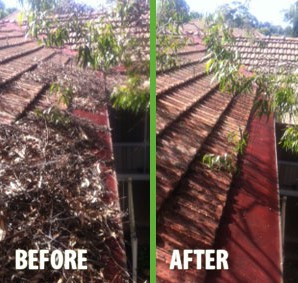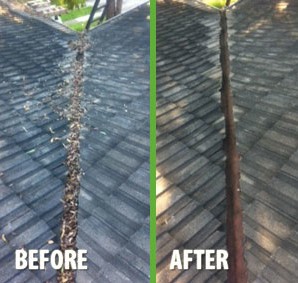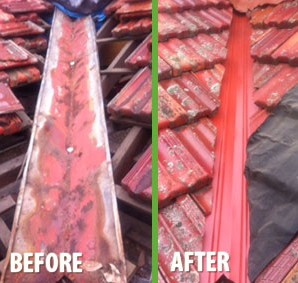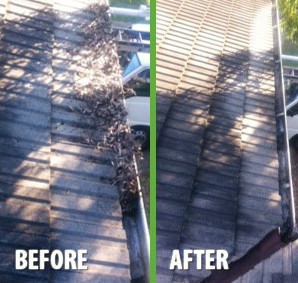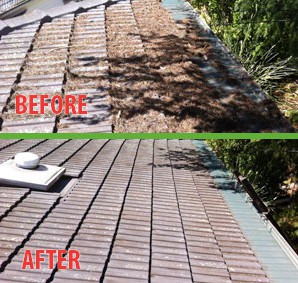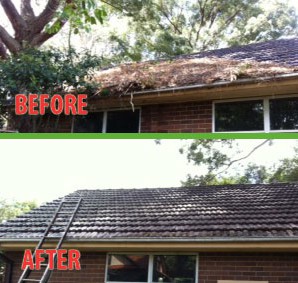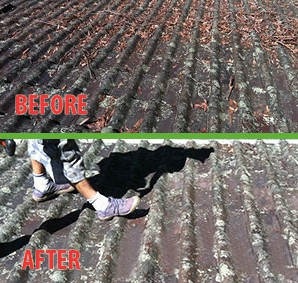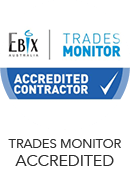Roof leaks can be a homeowner’s nightmare, causing not only structural damage but also frustration and inconvenience. However, understanding common roof repairs and how to fix roof leaks can turn the tables in your favor.
In this guide, we will walk you through the essential steps to identify, address, and prevent roof leaks. By the end of this journey, you’ll be equipped with the knowledge and confidence to safeguard your home from the relentless drip-drip of a roof leak.
Tips For Fixing Roof Leaks
1. Understanding Roof Leak Causes
First and foremost you must understand the causes behind roof leaks, as it can be as tricky to pin down as the drop in temperature when you head south. Start by understanding the usual suspects, which could be damaged shingles, dodgy flashing, and general wear and tear.
In places with harsh weather like Australia, your roof faces tough challenges. Intense sun, heavy rain, and hailstorms can harm your roof’s protective layers. Over time, this can create cracks or damage on your roof, allowing water to get inside your home.
2. Essential Roof Leak Detection
Detecting a leaking roof can be challenging, but homeowners can rely on a straightforward checklist of signs, both inside and outside their homes. Inside, they should keep an eye out for water stains on the ceiling or walls that are clear indicators of a potential problem. If you notice discolored patches or areas that seem to sag, it’s time to grab a ladder. Additionally, checking for mold or mildew growth, especially in hard-to-reach corners, is essential.
Outside, homeowners should inspect the roof. Loose or missing shingles can allow water to seep in rapidly. You should also examine for cracked or damaged flashing around vents and chimneys, common sources of leaks. Lastly, you should remember to check the gutters, as clogs can result in water backup on the roof, leading to various issues.
3. DIY vs. Professional Repairs
Homeowners can determine whether they’re dealing with a minor issue they can handle themselves or if it’s time to seek professional help. Sometimes, a bit of DIY can do the trick, but for larger problems, it’s best to leave it to the experts. For minor leaks, such as a single damaged shingle or a small crack, homeowners can usually roll up their sleeves and take care of it themselves. It’s an opportunity to tap into their inner handyman, and it can save them some money. However, safety should always come first – using a sturdy ladder and wearing non-slip shoes is essential.
On the other hand, if there’s a major leak, multiple damaged areas, or a complex issue like a damaged chimney flashing, it’s time to reach out to the professionals. Roofing professionals possess the necessary skills, experience, and safety equipment to handle these types of repairs safely and effectively.
4. Step-by-Step Repair Instructions
For those who enjoy tackling DIY projects, here’s a step-by-step breakdown of the repair process. First and foremost, prioritize safety, as roof work comes with its fair share of risks, so ensure you have the necessary safety gear on hand. This includes a sturdy ladder, non-slip shoes, and a safety harness – these are absolute musts. Once you’re geared up, gather your tools and materials. You’ll need roofing cement, spare shingles, a hammer, roofing nails, a pry bar, and a putty knife to get the job done right.
Now, let’s get to work:
Step 1: Identify the Leak Source: Trace the leak back to its source, both inside and outside the house.
Step 2: Prepare the Area: Clear away debris and make sure the area is clean and dry.
Step 3: Lift the Damaged Shingle: Use your pry bar to carefully lift the damaged shingle, exposing the problem area.
Step 4: Apply Roofing Cement: Apply a generous layer of roofing cement to the damaged area and press the shingle back into place.
Step 5: Secure the Shingle: Secure the shingle with roofing nails and cover the nail heads with more roofing cement.
Step 6: Check Your Work: Give it a once-over to ensure everything’s secure and watertight.
Step 7: Monitor the Repair: Keep an eye on the repaired area to make sure the leak is properly sealed.
Remember, this is just a basic guide for minor repairs. If you’re unsure about anything, it’s best to consult a professional for roof repairs.
5. Roof Leak Prevention
Prevention is the name of the game. Keep reading and get to know how to maintain your roof, so you don’t have to deal with leaks down the track. Performing routine inspections and showing a little tender loving care can significantly prolong your roof’s lifespan and keep your wallet a bit thicker.
Regular Inspections: Schedule regular inspections – twice a year is a good rule of thumb. Look for signs of wear and tear, damaged shingles, or loose flashing.
Gutter Maintenance: Keep those gutters clean! Clogged gutters can cause water to back up onto your roof, which further leads to leaks.
Trim Overhanging Branches: If you’ve got trees close to your roof, trim the branches. This is because falling branches or debris can damage your roof.
Proactive Repairs: When you spot a minor issue, address it promptly. Don’t wait for it to become a major headache.
6. When To Consult A Professional
While DIY is commendable, there are some leaks that are beyond our expertise. In such cases, it is best to reach out to the professionals. They’ve got the know-how and the right equipment to tackle the job safely and effectively.
If you’re dealing with any of the following, it’s time to call in the experts:
- Multiple roof leaks
- Extensive damage to your roof
- Complex issues like damaged flashing around chimneys or vents
- Roofing material replacement
- A need for a complete roof overhaul
Professionals will conduct a thorough assessment, provide a detailed repair plan, and ensure that your roof is in top-notch condition.
7. Cost Estimates and Budgeting
It is important to know about the financial aspects of roof repairs and replacement. Homeowners generally aim to make cost-effective choices. Knowing the right estimates can empower them to make prudent financial decisions.
For minor roof repairs, such as fixing a small hole or replacing a few shingles, homeowners can expect a relatively budget-friendly expenditure. Typically, these repairs can be managed as DIY projects, primarily covering costs for materials like roofing cement and shingles.
However, if a leak is more extensive or necessitates professional assistance, the expenses may escalate. Factors impacting costs include the severity of the leak, the extent of damage, the type of roofing material, and labor fees. On average, professional roof repair costs can range from a few hundred to several thousand dollars.
It’s vital to bear in mind that the expense of addressing a roof leak is often significantly lower than dealing with the consequences of neglecting a major leak. Costs related to water damage, mold removal, and structural repairs can accumulate into a considerably higher bill. Therefore, homeowners should view roof repairs as an investment in the long-term health and resilience of their homes.
8. Materials and Tools
Before individuals get started, they’ll require the appropriate equipment. It’s essential to ensure that you have the complete set of gear at your disposal before commencing any work.
Roofing Cement: A reliable sealant for patching up cracks and gaps.
Spare Shingles: Have a few on hand in case you need to replace damaged ones.
Hammer: A trusty tool for securing roofing nails.
Roofing Nails: These are specially designed for securing shingles and flashing.
Pry Bar: Essential for lifting and removing damaged shingles or flashing.
Putty Knife: Useful for spreading roofing cement evenly.
Ladder: Ensure it’s sturdy and positioned on solid ground.
Safety Gear: Non-slip shoes, gloves, and a safety harness if you’re working at heights.
Having these materials and tools ready before you start your repair project will save you time and ensure a smoother process.
Conclusion:
Homeowners now have a better understanding of how to identify, tackle, and even prevent roof leaks, whether they choose the DIY route for minor issues or opt for professional assistance with more complex problems. By prioritizing safety, regular inspections, and timely repairs, homeowners can extend the life of their roofs, safeguard their homes from water damage, and make informed financial decisions when it comes to roofing repairs. Remember, a well-maintained roof is not only an investment in your property’s longevity but also in your peace of mind.



